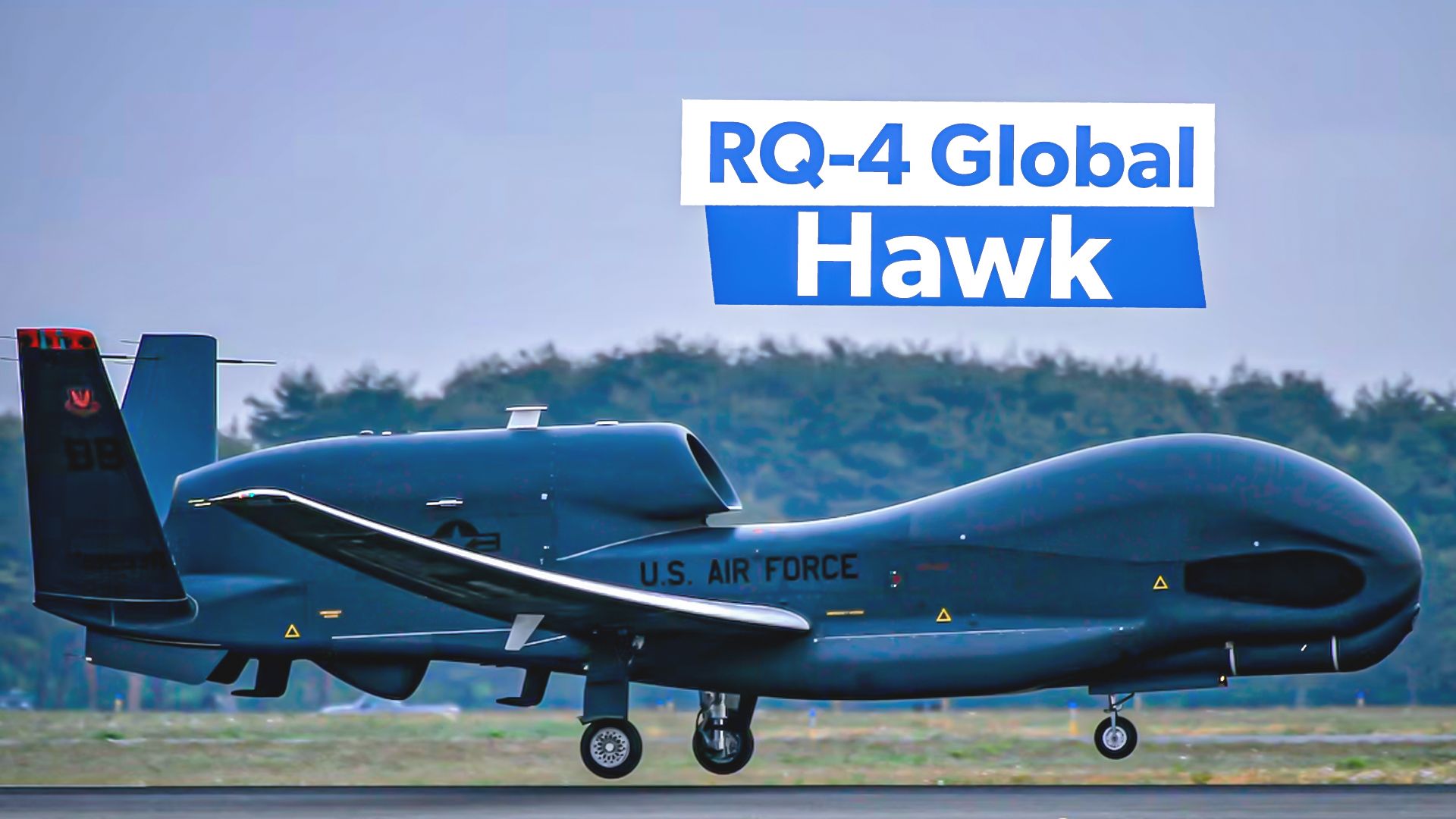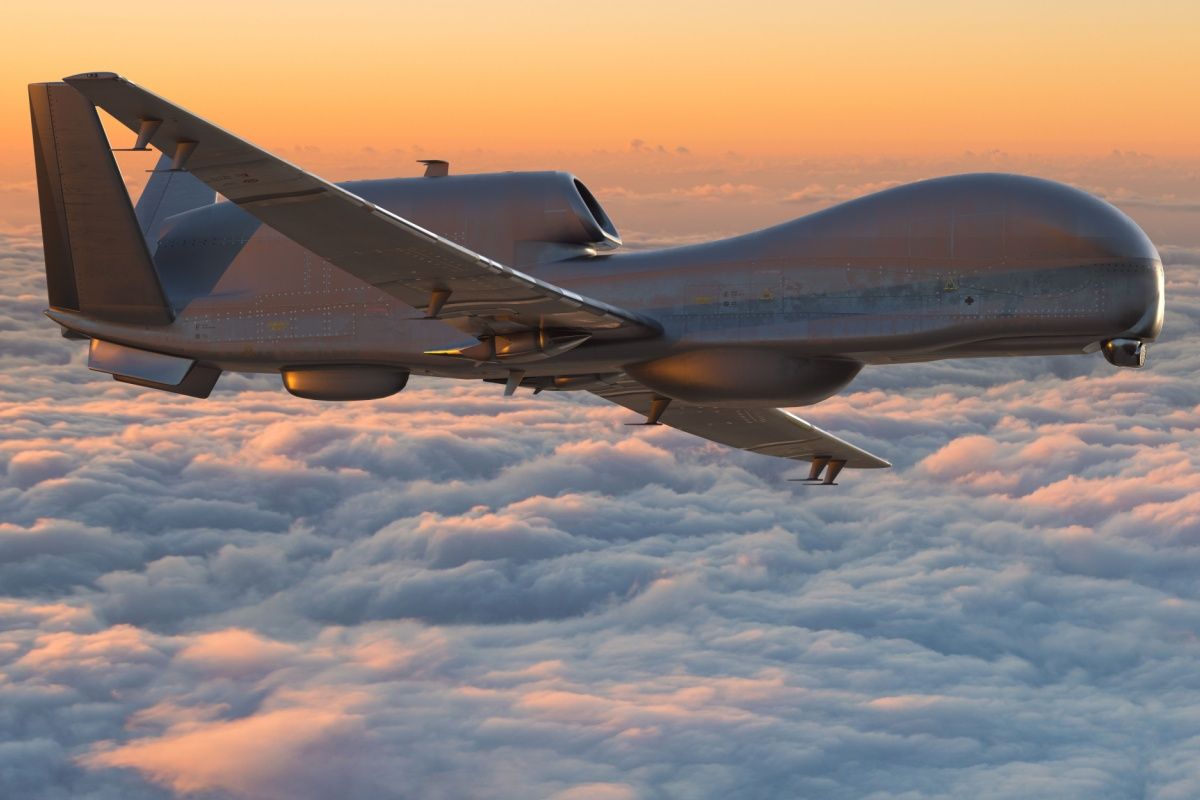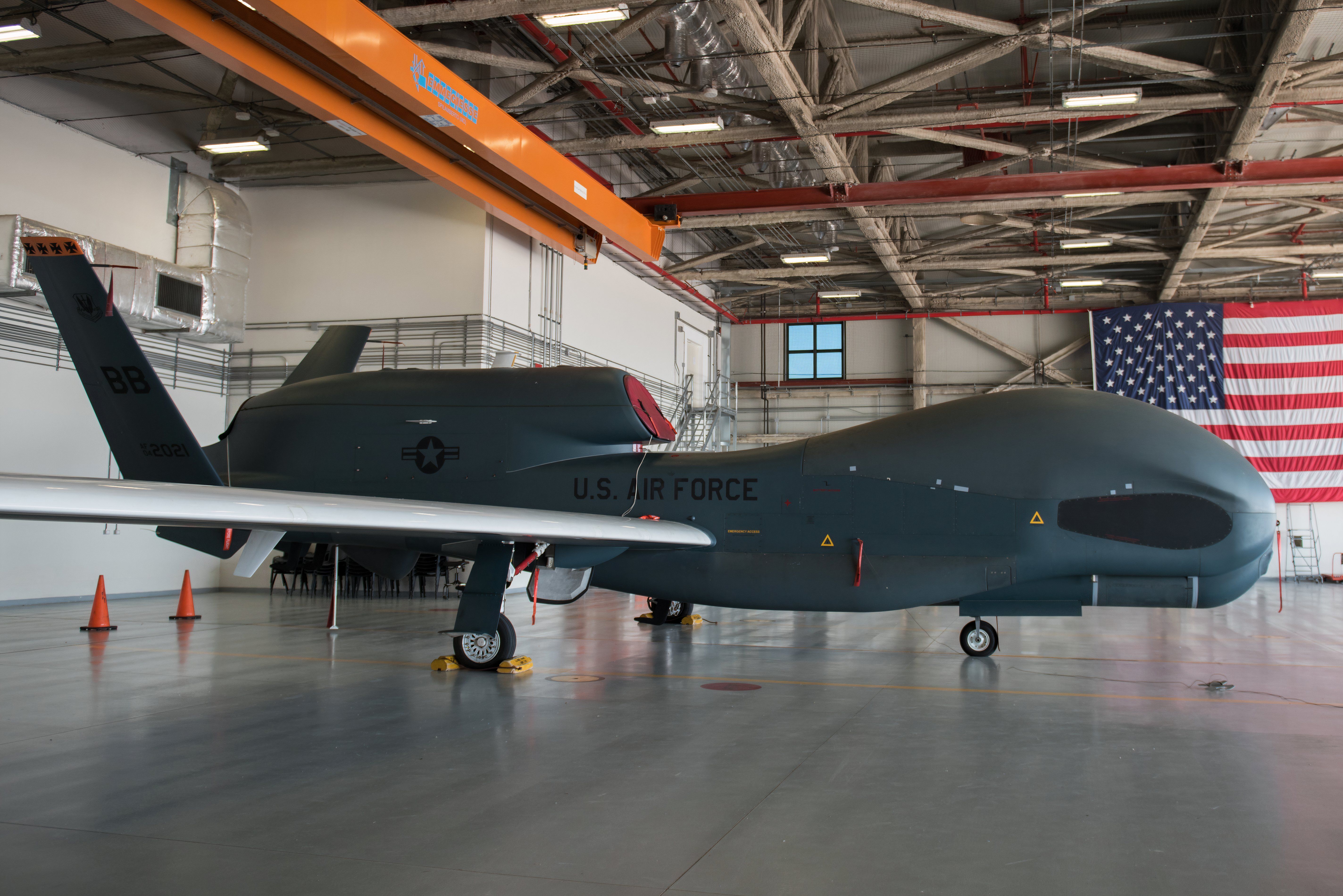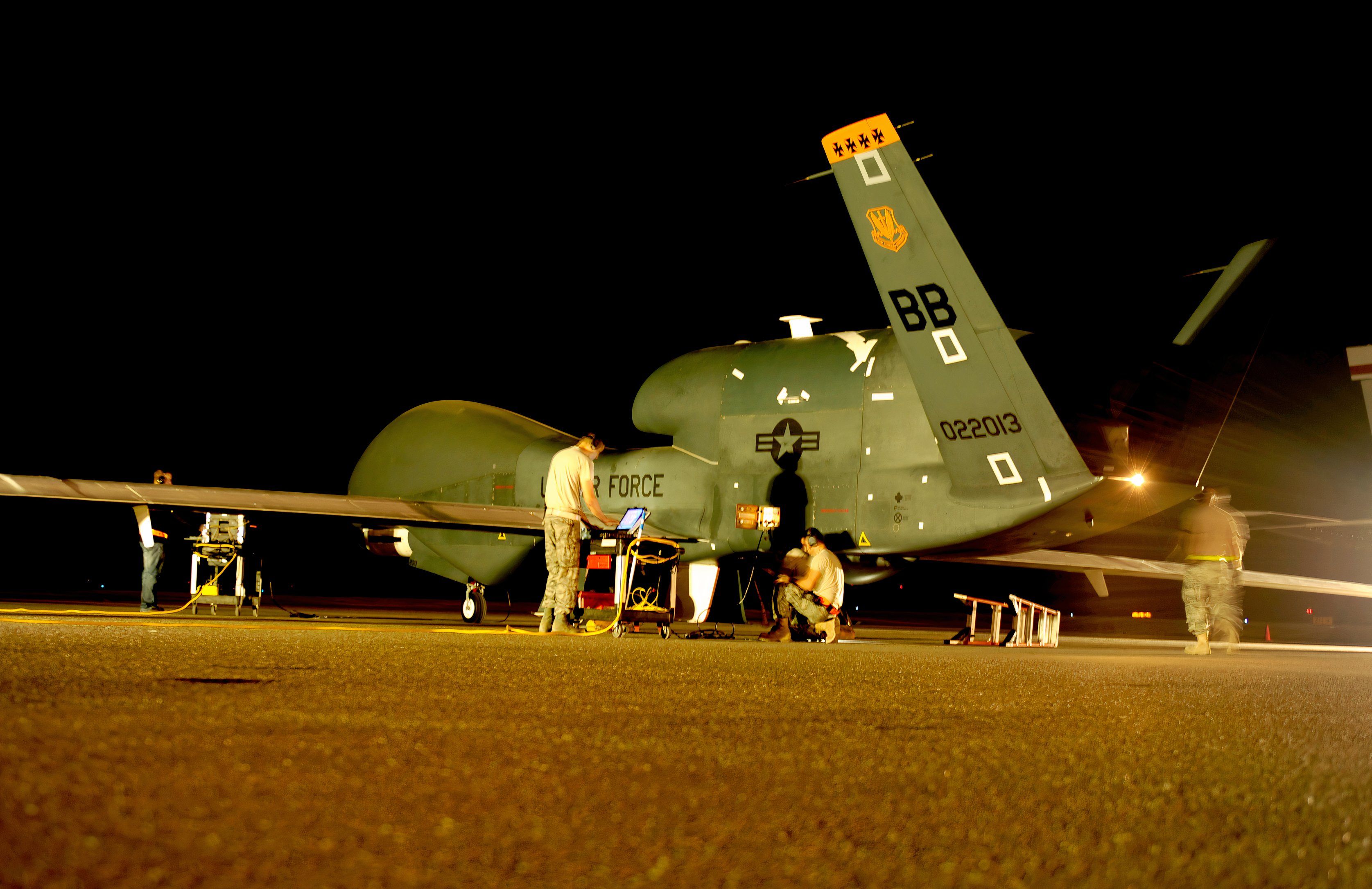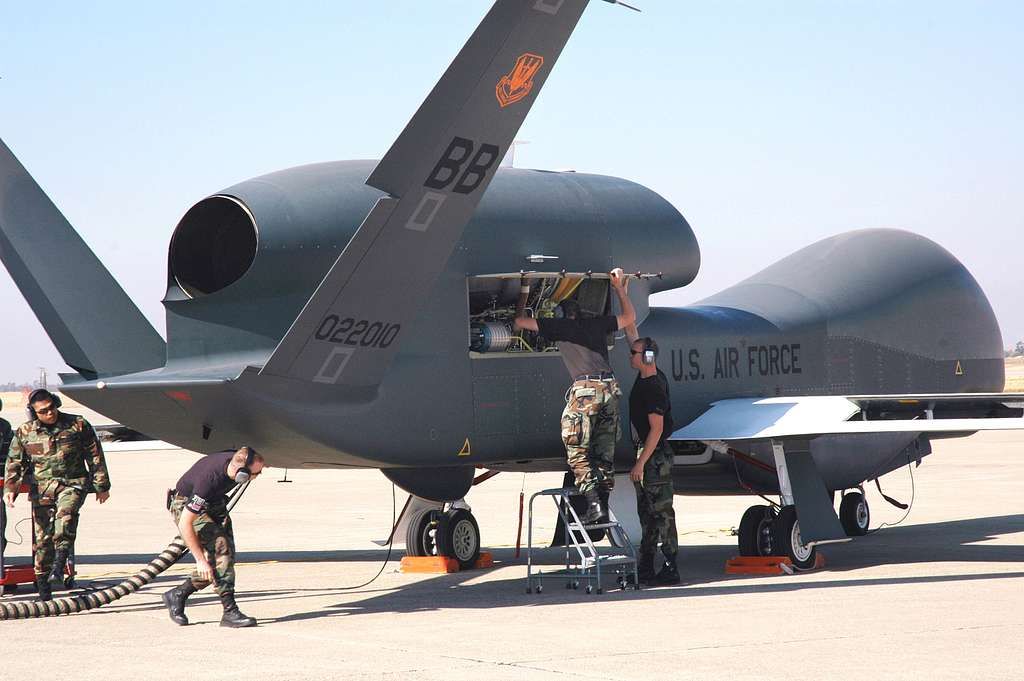Summary
- Block 40’s design includes RTIP, which provides MTI and SAR data for US forces.
- Global Hawk focuses on intelligence missions with high-endurance capability, which is ideal for ISR data tasks.
- US-Japan partnership strengthens interoperability with Global Hawk deployment, enhancing bilateral ties.
The Northrop Grumman RQ-4 Global Hawk is an unmanned aircraft system designed to perform high-altitude long-endurance intelligence, surveillance, and reconnaissance (ISR) missions. The aircraft, piloted from the ground, serves a range of purposes for the US military. This article notes some missions that the Global Hawk fleet performs with the US forces.
1
Enemy threat and target information
Uses high-efficiency radar technologies
- Radar Technology Insertion Program (RTIP)
- Active electronically scanned array radar
- Early Operating Capability (EOC
The Air Force Life Cycle Management Center notes that the Global Hawk takes part in providing a broad spectrum of Intelligence, Surveillance, and Reconnaissance (ISR) collection, including data about enemy capabilities, threats, and target information. The platform supports the joint combatant forces worldwide, enabling more standardized methods of unmanned intelligence.
Photo: Mike Mareen l Shutterstock
The Air Force states the capabilities of the newer Block 40 design with enhanced radar and scanning technologies fulfilling the platform’s mission by stating,
“Block 40 carries the Radar Technology Insertion Program (RTIP) active electronically scanned array radar which provides MTI and SAR data. Block 40 Early Operating Capability (EOC) was declared in Sep 2013 and eleven Block 40s are currently fielded, supporting operations in four combatant commands.”
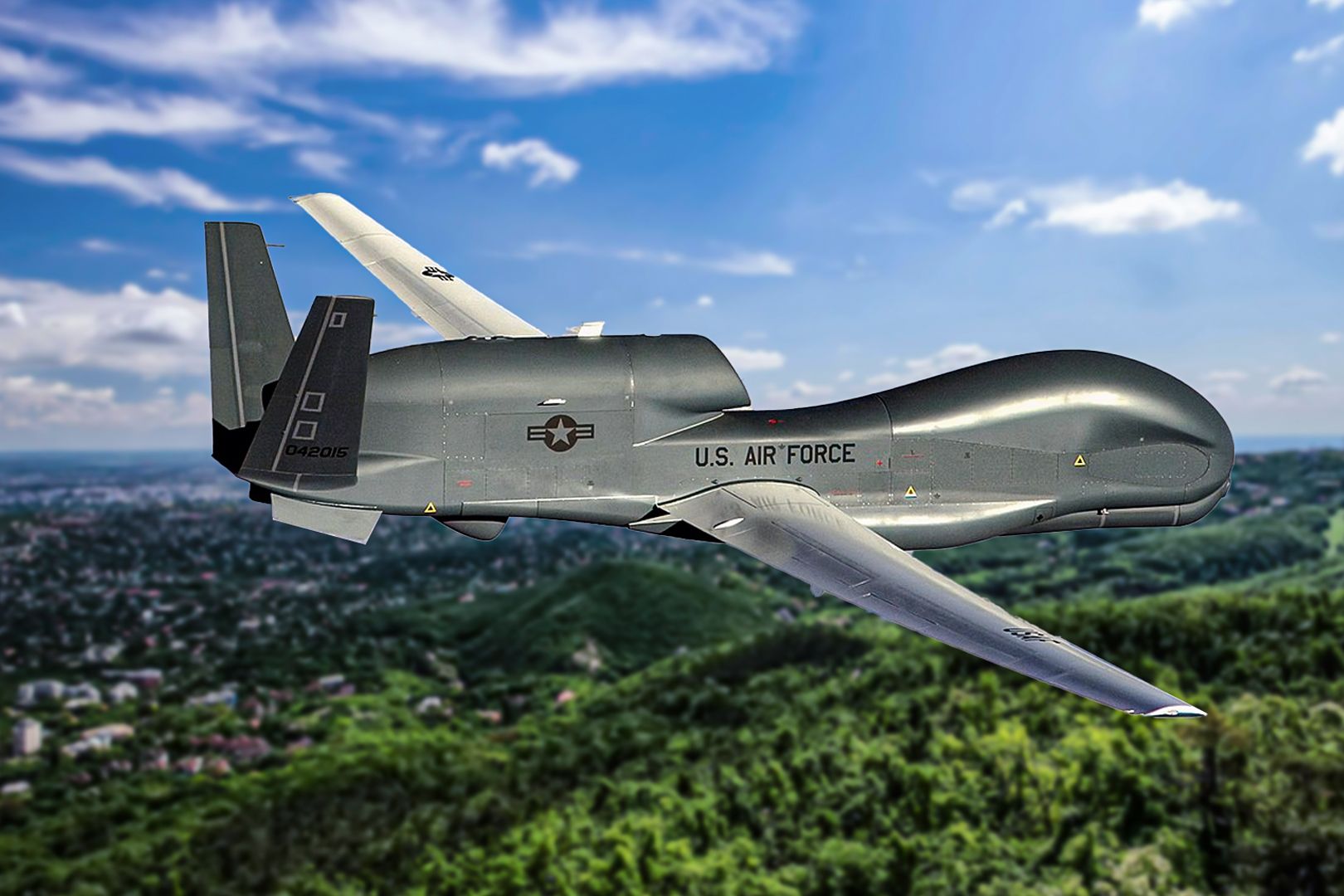
Related
How Long Can A US Air Force RQ-4 Global Hawk Stay In The Air?
The drone has long been known for its efficiency and capability.
2
Imagery analysis
Uses satellite imagery and sensors for intelligence
- Imagery intelligence (IMINT)
- Signals intelligence (SIGINT)
- Moving target indicator (MTI) sensors
- Electro-optical sensors
- Infrared sensors
- Synthetic Aperture Radar (SAR) technology
The US Air Force’s RQ-4 Global Hawk is deployed on a variety of intelligence missions, enabling a full use of its imagery and signal intelligence capabilities. The aircraft primarily identifies and uses information collected via satellite imagery. According to the Air Force,
“The Global Hawk provides persistent near-real-time coverage using imagery intelligence (IMINT), signals intelligence (SIGINT), and moving target indicator (MTI) sensors.”
Commanded by robust electro-optic and radar sensors, the intelligence collection management system of the Block 30 design enables multi-level analysis of the acquired data. According to the Air Force,
“Block 30 is a multi-intelligence platform that simultaneously carries electro-optical, infrared, synthetic aperture radar (SAR), and high and low band SIGINT sensors.”
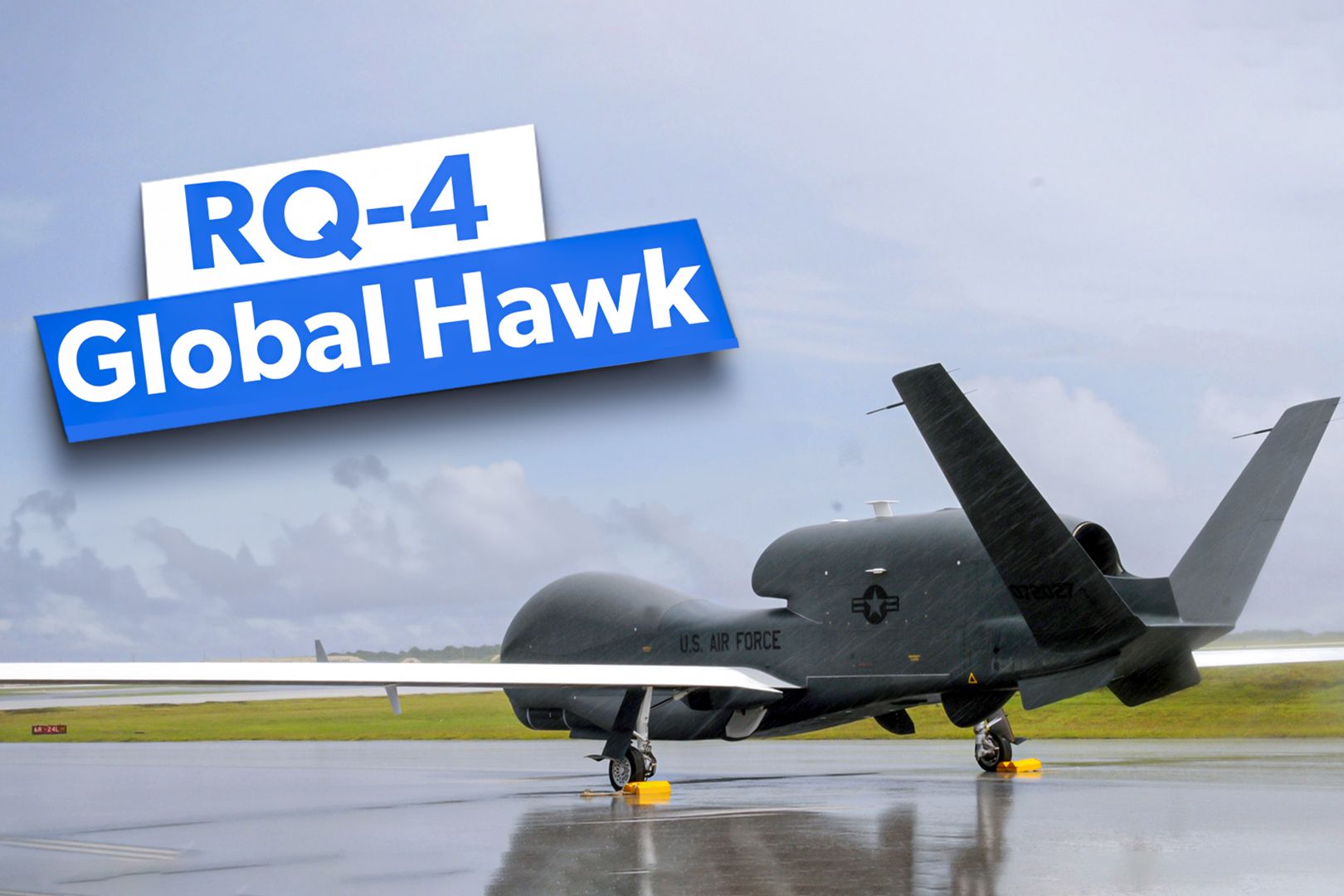
Related
How Is The RQ-4 Global Hawk Controlled?
The Northrop Grumman RQ-4 Global Hawk is an RPA with a range of more than 14,000 miles and can stay in the air for more than a day.
3
Aircraft launch and recovery
Special systems support the mission while en route to and from the target areas
- Launch and Recover Element (LRE)
- Mission Control Element (MCE)
The RQ-4 Global Hawk functions on two major systems: the LHE and the MCE. The Air Force states that the LRE is located at the aircraft base, while the MCE controls the aircraft for the bulk of its missions. The LHE supports the launch and recovery of the aircraft when en route to and from the mission areas.
Photo: USAF
One pilot mans the LRE, while the MCE requires a sensor operator in addition to the pilot. From the ground, the pilots command the aircraft’s launch and release positions that are aligned with the mission. According to the Air Force,
“The pilot workstations in the MCE and LRE are the control and display interface (cockpit) providing aircraft health and status, sensors status, and a means to alter the navigational track of the aircraft. From this station, the pilot also communicates with outside entities to coordinate the mission (air traffic control, airborne controllers, ground controllers, other ISR assets).”
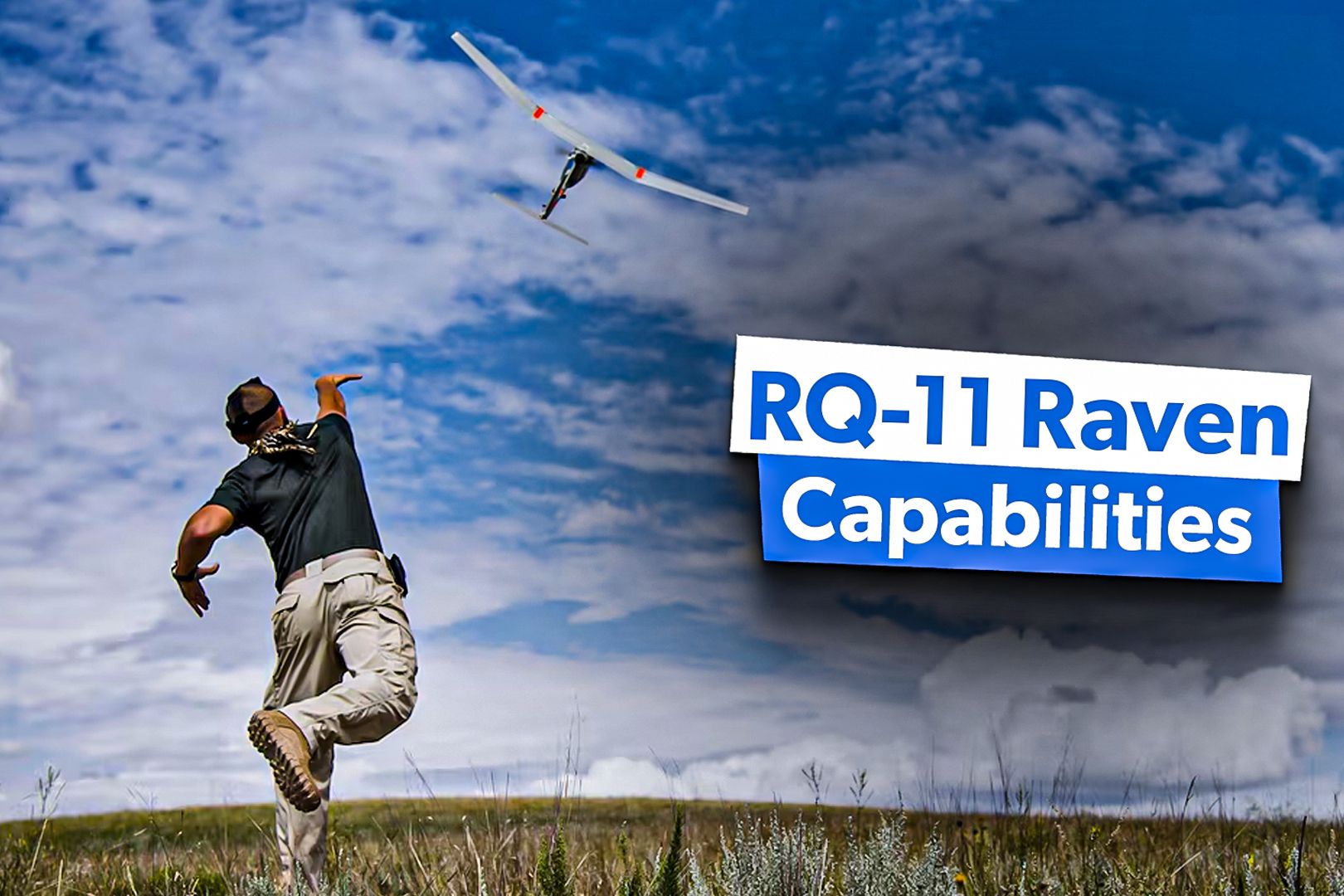
Related
What Are The Reconnaissance Capabilities Of The US Army & Air Force RQ-11 Raven?
AeroVironment RQ-11 Raven is a small, hand-launched, remote-controlled UAV.
4
Line-of-sight communication
Uses Moving Target Indicator (MTI) sensors
- Weight: 14,950 pounds (6,781 kilograms)
- Maximum takeoff weight: 32,250 pounds (14,628 kilograms)
- Fuel capacity: 17,300 pounds (7,847 kilograms)
- Payload: 3,000 pounds (1,360 kilograms)
- Speed: 310 knots (357 mph)
- Range: 12,300 nautical miles
- Endurance: more than 34 hours
- Ceiling: 60,000 feet (18,288 meters)
The RQ-4 Global Hawk can conduct surveillance over an area of 40,000 nautical square meters to an altitude of nearly 12.5 miles (20 km) in 24 hours. With the aircraft’s high-endurance profile and immense operational range, the Global Hawk is ideal for line-of-sight communication and data transmission to ground forces.
Photo: USAF
The Air Force states that the military drone is designed to provide near-real-time coverage using imagery intelligence (IMINT) persistently, signals intelligence (SIGINT), and moving target indicator (MTI) sensors. These sensors pick up the tiniest air signatures during flight, which many other systems may fail at.
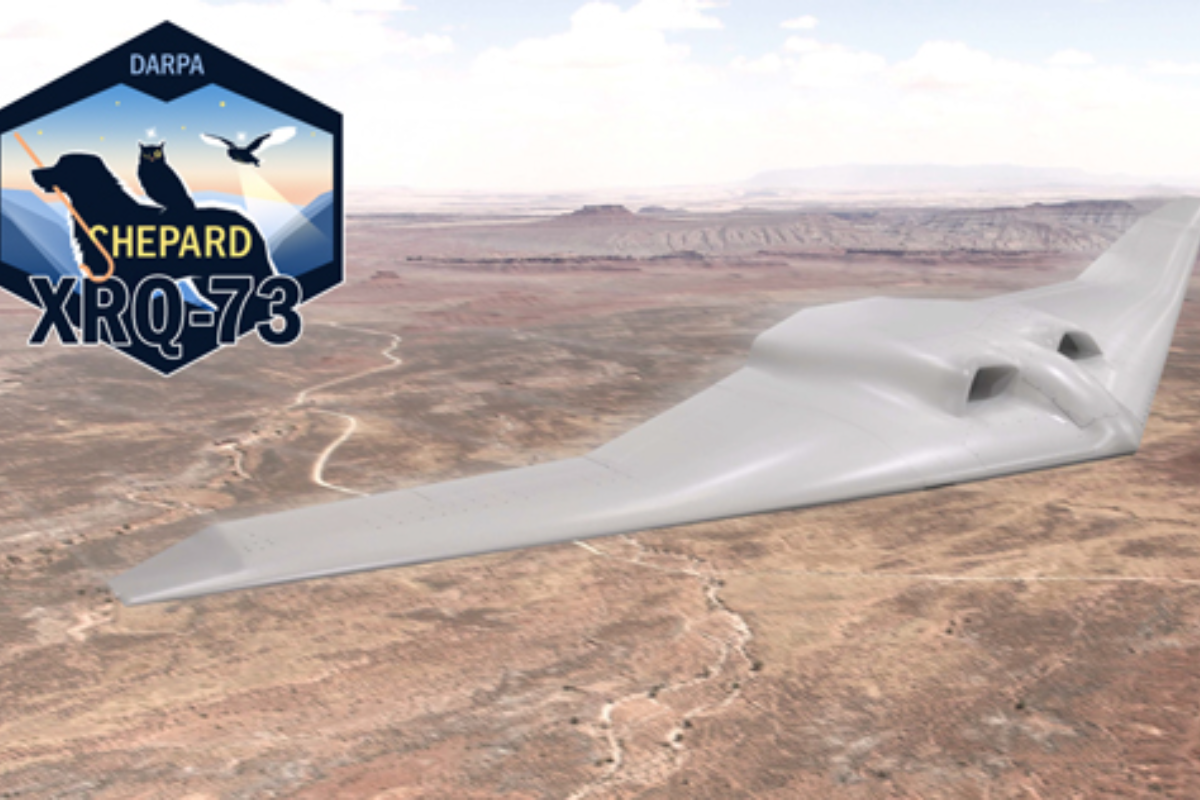
Related
XRQ-73: USAF DARPA’s New Stealthy Wing Drone Program Now Has A Designation
The XRQ-73 is the latest in a long line of secretive and stealthy drones likely used for long-range recognizance missions in contested environments.
5
Japan-US allied ISR mission
To strengthen US-Japan interoperability
- Global Hawk’s primary function: High-altitude, long-endurance ISR
- Power Plant: Rolls Royce-North American F137-RR-100 turbofan engine
- Thrust: 7,600 pounds
- Wingspan: 130.9 feet (39.8 meters)
- Length: 47.6 feet (14.5 meters)
- Height: 15.3 feet (4.7 meters)
In 2022, the 4th Reconnaissance Squadron from Andersen Air Base in Guam partnered with the Koku-Jieitai’s (Japan Air Self-Defense Force) Air Reconnaissance Group at Misawa Air Base, Japan. With the Japanese forces receiving their RQ-4B Global Hawks fleet, the two countries joined hands to strengthen US-Japan interoperability and bilateral ties.
According to the commander of the 4th RS unit, Lieutenant Colonel John Wright,
“The 4th RS is providing ad-hoc subject matter expert assistance, usually in the form of meetings and discussions within the bounds of information classification.”
“On occasion, we get the chance to travel to one another’s units and observe actual maintenance or other activities in person. We’re providing lessons learned, professional insights and best practices, which only come with the vast experience the 4th RS has in conducting launch and recovery operations.”
![7064667 - Wireless capable ruggedized laptops enhance maintenance capabilities [Image 1 of 5]](https://static1.simpleflyingimages.com/wordpress/wp-content/uploads/2024/06/7064667.jpg)
Related
USAF Set To Hit Rapid Electronic Warfare Updates Breakthrough
The US Air Force is working to update all its platforms in three hours or less because “data is the weapon.”

